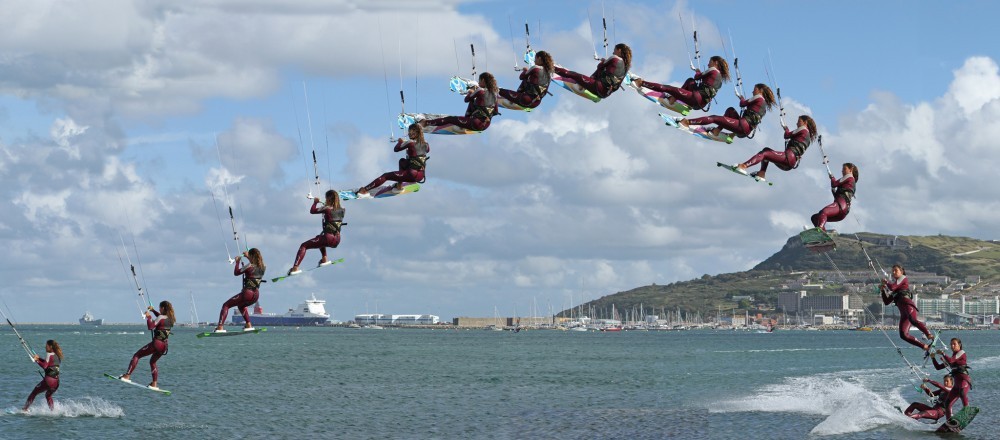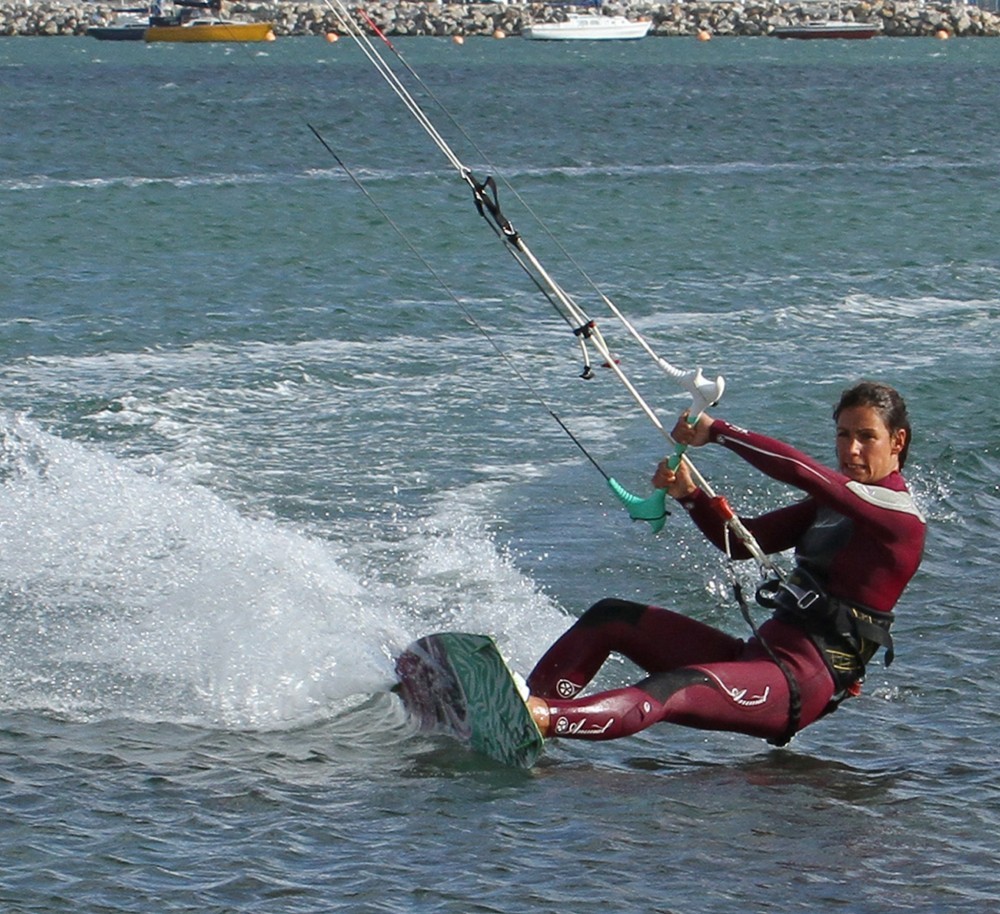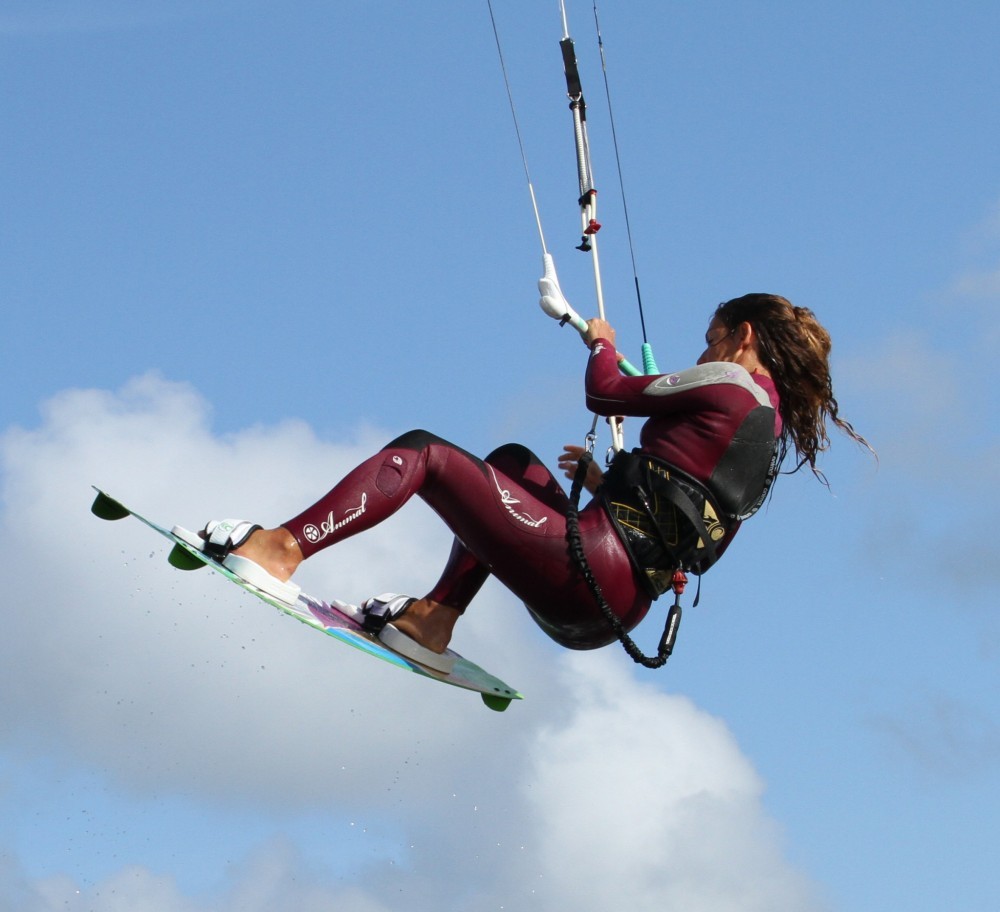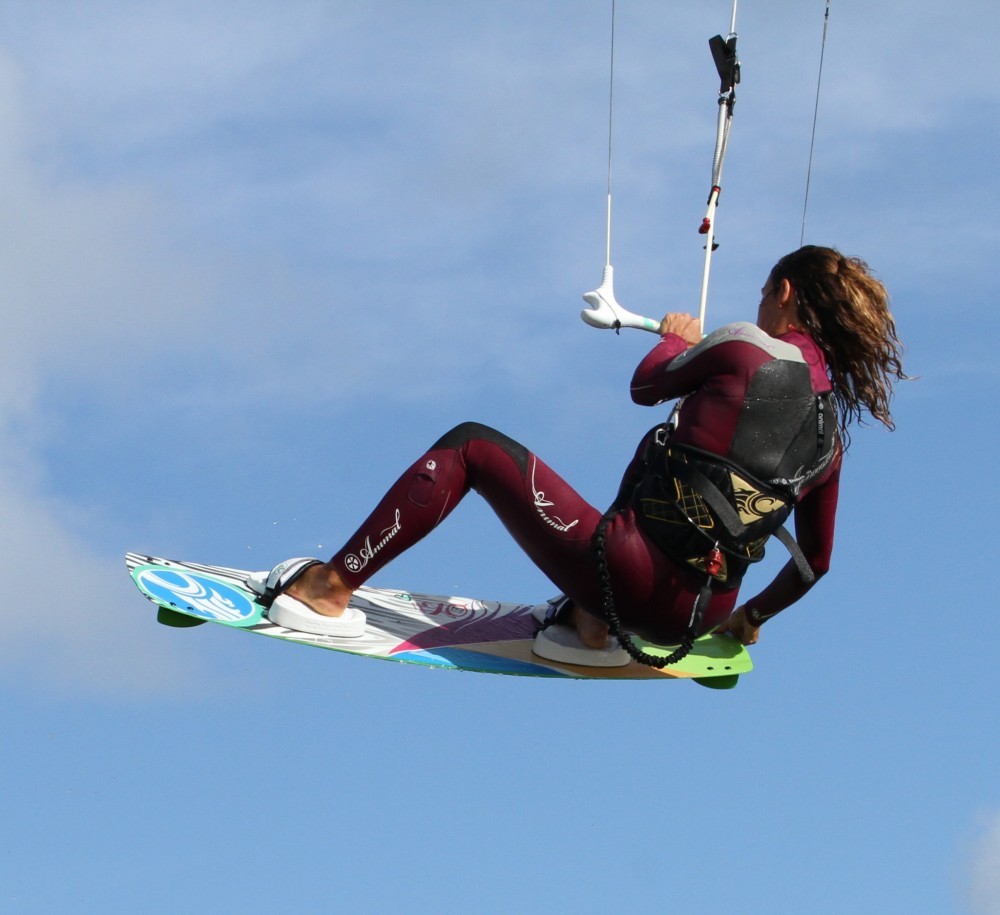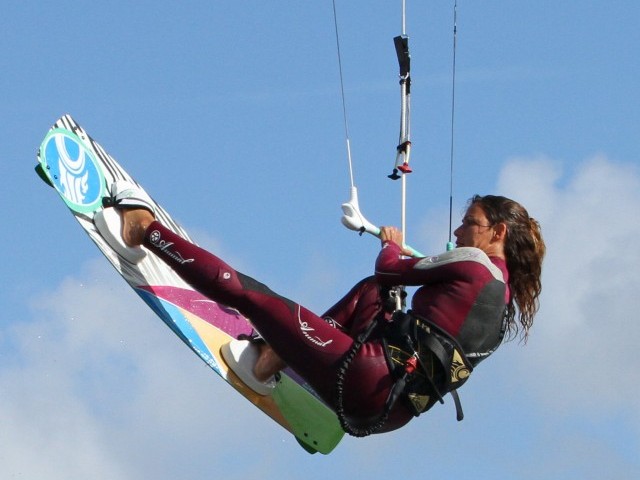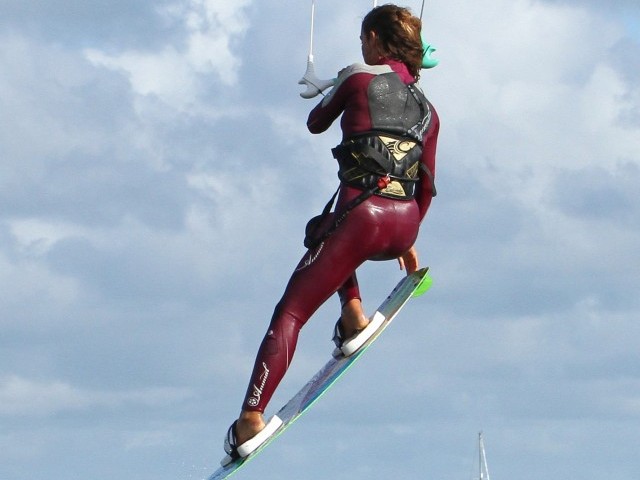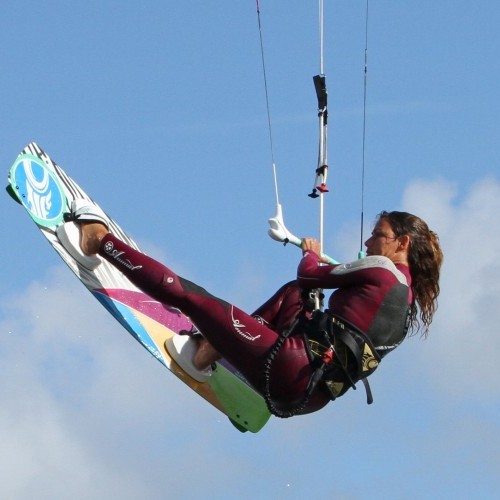
Jump with Tweaked Boned Grab
Technique / Intermediate
Introduction
Having recently returned from what can only be described as a grab-tastic clinic, we hunted through the back catalogue of moves and realised that we’ve never offered any guidance on how to add a grab to a stock jump. Grabbing is the simplest method of adding that certain “je ne sais quoi” to any move. A jump is no different and should certainly be no stranger to a quick tickle or even a fully tweaked and boned out hold!
3 Steps to Heaven
Before attempting to grab there are a few simple skills to acquire, which really just need a moment’s concentration and a small dose of go for it.
Firstly, and all the whys will be revealed in good time, you need to practice your jumps with your hands centred on the bar. If you’re completely new to this idea, spend some time just kiting around with your fingers up close to the centre line. To make the kite move you’ll need to use both hands, push and pull.
Secondly you need to make sure that you concentrate on getting up and off the water before engaging the brain into grab mode, so you’ll need to give the kite a decent send back towards either 1 or 11 o’clock.
Thirdly, and finally for now, you’ll need to bully yourself to actually take your back hand off the bar once you’re flying. At first it can be as little as relaxing your grip, or touching your knee, but you need to release it and believe that it won’t go horribly wrong if, sorry, when you do.
The Jump
Karine shows what we want to get up off the water. Her hands are close to the centre of the bar so she pulls on her back hand and pushes away with her front hand to move the kite from 11 o’clock past 12 towards 1. This is only possible if she’s got a good, solid edge upwind. We bang on about resistance for take off, and you can see how Karine’s board is edged right over, between her and the kite, with her front leg extended and her back leg resisting with her weight low. Try to get into this position before you jump, so that you can feel you back heel pushing into the footpad and your back leg taking a lot of pressure. Then as you send the kite push harder against your back foot. Final reminder, no cheeky peaks at the kite, or else you’ll loose your edge.
Going Up
You’ll be quite busy on the way up as you want to get your grab in whilst rising, or at latest by the top of your jump, as this will make landing with control a lot more simple. First and foremost you need to maintain tension on the lines for float and to keep control of the kite, so keep the bar in. On the way up Karine brings her bar in and whilst she still has two hands on it she makes sure that the kite is not left behind her by levelling the bar out. For float and balance you’ll ideally have the kite just behind 12 once you’re up. If you feel the urge, now is a good time to look at your kite and check where it is. At the same time Karine lifts her knees up towards the bar, so that the board is in front oh her. Finally once the board is up and the kite is high Karine releases her back hand! With her front hand near the centre of the bar the kite won’t move when she lets go, and neither will yours.
The Grab
Believe it or not grabbing the board with your recently freed hand will feel more balanced than leaving it to blow around in the wind. At first just reaching down and touching your board will suffice, but as your confidence grows you should aim for a decent grip somewhere on the tail of your board, either the end or the heelside edge around the fin. You can try this sitting on the beach, but if you can muster a quick glance at the tail whilst airborne, you should be able to reach it because your legs and stomach have done all the work, bringing the board up to within grabbing distance. You can see that Karine is not leaning back, but upright with the bar in, the kite above her and her knees tucked into her chest. So the board is right there. One important thing to note here is, don’t be tempted to go for the grab too early. This may encourage you to only bend the knees and flick the board up behind you. This will not be such a stable position in the air and definitely won’t look as good.
Boning it Out
Once you’re happy with reaching the board and grabbing it, you can add even more spice to the grab. There are many ways in which you can tweak a grab, with a plethora of silly names to suit. Here we’re going to bone this one out (spoken in a plumy British 1950s TV accent Mr Chumley Warner). The idea is to pull the board into you with the grab, whilst extending your front leg away from you. By pulling her back hand and the board towards her Karine’s back leg bends as much as it can. Holding onto the board allows Karine to push the board and her front foot away from her, extending her front leg until it’s straight – boned out. Karine still has the bar pulled in, so the kite is supporting her as she floats downwind.
Landing
Depending on how comfy you feel, you have two choices. At first you’ll most likely favour releasing the grab as you start to descend so that you can get both hands back on the bar for your landing. If however you’re not new to grabbing but are working on the bone and holding it for as long as possible there is no reason why you can’t drop the board at the last moment. Although we did assure you that your kite won’t move when you take your back hand off for the grab, it actually will, just not significantly. However this slight move forward will affect your landing. The kite will be leading you, pulling towards the edge of the window, which means that you will land on an edge, with no power, slightly off balance. To counteract this you need to give the kite a decent dive to pull you down wind for a soft and flat landing. In the picture Karine is holding her grab as long as possible. She has already dropped the board down under her and will release the grab just before touching down. However even though she is one handed, just before landing she is already pulling hard on her front hand. Although this feels counter intuitive, it works rather well. As it’s Karine’s front hand on the bar, the kite pulling as it dives down will twist her and the board downwind for a perfect landing. And what’s more, should you feel off balance, use your back arm, much as a rodeo rider would.
Have a look at the Videos and Sequence to see the move in its entirety.
Top Tips
If this is your first venture into the world of grabbing confidence is everything, so keep it controlled and don’t reach for the stars. If you can land a jump, adding a grab is as simple as lifting your knees.
Should you be concentrating on the holding and tweaking the grab use your grip. Holding onto the back of the board, pulling it up whilst trying to push the board away will guarantee you some style.
And remember all this will be a lot easier if you fly with your kite just behind 12, as you’ll have better balance and there is room for the kite to move should you lean heavily on the front hand whilst grabbing.
Keystones
- Solid Edge
- Positive Send
- Level Bar & Knees Up
- Back Hand Grab
- Dive Hard for Landing
This technique article was in Issue 35 of IKSURFMAG.
Related
By Christian and Karine
Christian and Karine have been working together as a coaching team, running improver to advanced kitesurfing clinics since 2003.






